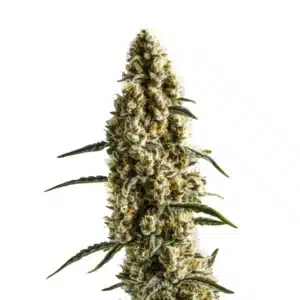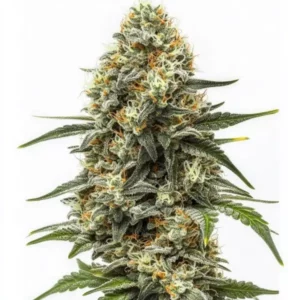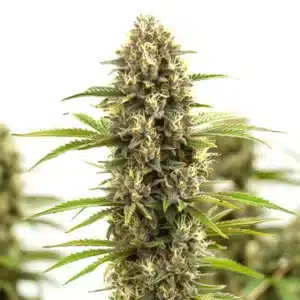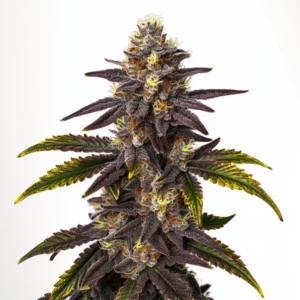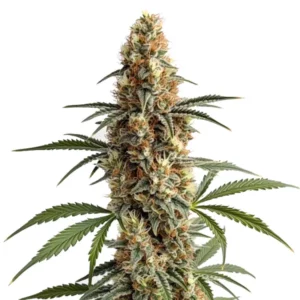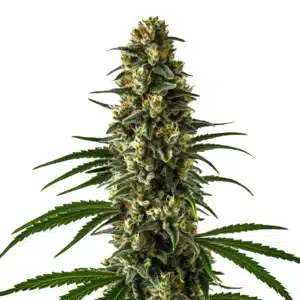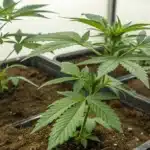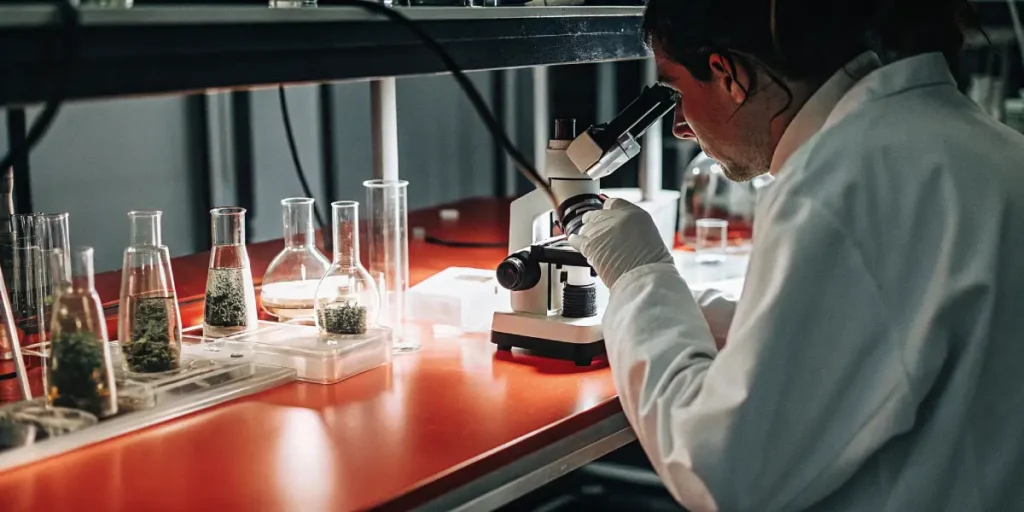
What Are Plant Hormones in Cannabis
Plant hormones in cannabis are like tiny directors orchestrating the growth and development of your plants. These natural chemicals play vital roles in how cannabis plants grow, flower, and produce the buds we all love. If you’re new to growing or even a seasoned cultivator, knowing plant hormones can significantly improve your cannabis yield and quality.
These hormones control everything from seed germination to the size and potency of your buds. By knowing how plant hormones affect cannabis yield, you can tweak your growing conditions for the best results. It’s not just about watering and light; the internal chemistry matters too.
Recommended Strains
Yumbolt Banana
|
|
THC | 20% - 25% (Medium) |
|
|
Type | Feminized |
|
|
Yield | Low |
|
|
Phenotype | 60% Indica / 40% Sativa |
Big Bud Auto
|
|
THC | 18% - 22% (Medium) |
|
|
Type | Autoflowering |
|
|
Yield | Medium |
|
|
Phenotype | 80% Indica / 20% Sativa |
For those diving into cannabis cultivation, knowing the types of plant hormones in cannabis cultivation can be a game-changer. Whether you’re growing at home or in a commercial setup, these hormones are key to unlocking the full potential of cannabis strains like Gorilla Glue 4, Girl Scout Cookies, and Blue Dream from Blimburn Seeds.
Types of Plant Hormones in Cannabis Cultivation
There are several types of plant hormones in cannabis cultivation that you should be familiar with. Each has a unique role and affects the plant in different ways. The primary hormones include auxins, gibberellins, cytokinins, abscisic acid, and ethylene. All contribute to the plant’s life cycle, from sprouting to flowering.
Auxins are crucial for root development and stem elongation. They help your cannabis plants grow tall and strong. If you’re looking to maximize plant height, auxins are your best friend. On the other hand, gibberellins stimulate seed germination and growth, ensuring your plants start off healthy.
Knowing what are plant hormones in cannabis and their specific roles can help growers make informed decisions about cultivation techniques. For instance, knowing when to apply certain hormones can lead to more efficient growth cycles and increased productivity. This knowledge is essential for achieving optimal results in cannabis farming.
Moreover, plant hormone balance in cannabis plants is critical for maintaining healthy development and maximizing yield. By observing the plant’s responses and adjusting hormone levels accordingly, growers can ensure that each stage of growth is supported by the appropriate hormonal activity. This careful balance can enhance both the quality and quantity of the harvest.
Auxins and Their Role
Auxins play a significant role in directing plant growth. They are primarily found in the tips of roots and shoots. The concentration of auxins determines the direction in which a plant grows. For cannabis growers, maintaining an optimal balance of auxins can help in shaping the plant structure and ensuring robust growth.
For practical use, consider training techniques like topping and low stress training (LST) to manage auxin distribution. These methods encourage lateral growth and can increase the number of flowering sites, enhancing the overall yield.
The role of plant hormones in cannabis growth is crucial, with auxins being a primary contributor to vertical expansion and root development. This growth is not only important for plant stature but also for nutrient uptake efficiency, directly impacting the plant’s health and yield potential.
Additionally, auxins influence phototropism and gravitropism, guiding plants toward light and stabilizing them against gravity. This adaptability is vital for indoor growers who manipulate light sources to optimize plant growth. Knowing how plant hormones affect cannabis yield through auxin management can lead to more vigorous and productive plants.
Gibberellins and How They Influence Growth
Gibberellins are another essential hormone group, influencing the plant’s ability to elongate stems and germinate seeds. These hormones can be particularly useful if you’re starting from seeds and want a swift germination process.
They are also responsible for breaking dormancy in seeds, making them ideal for growers looking to kickstart their cultivation quickly. However, too much gibberellin can lead to overly tall plants with fewer flowers, so balance is key.
The impact of plant hormones on cannabis quality is evident in the way gibberellins promote early growth stages, ensuring plants have a strong start. This early vigor translates into healthier, more resilient adult plants that can better withstand environmental stresses.
Moreover, by carefully managing gibberellin levels, growers can optimize the growth trajectory of their cannabis plants. This involves finding the right balance to prevent excessive stretching, which can compromise bud development and stability. Proper gibberellin management is a cornerstone of effective cannabis cultivation.
Promos & Deals
Impact of Plant Hormones on Cannabis Quality
The impact of plant hormones on cannabis quality cannot be overstated. When hormones are balanced, the cannabis plants produce higher-quality buds with better cannabinoid and terpene profiles. This means more potent and aromatic harvests.
Hormones like cytokinins promote cell division, which can lead to denser buds. If you aim for quality over quantity, paying attention to how these hormones work can make a difference. Proper hormone balance results in resinous, flavorful buds.
Knowing the types of plant hormones in cannabis cultivation and their interrelations is key to achieving superior quality. Hormones not only affect physical attributes like size and density but also influence chemical profiles, enhancing the sensory experience of cannabis.
Furthermore, manipulating plant hormones with precision can lead to customized cannabis profiles tailored to specific consumer preferences. This level of control over plant development allows growers to produce unique strains with distinctive characteristics, boosting their market appeal.
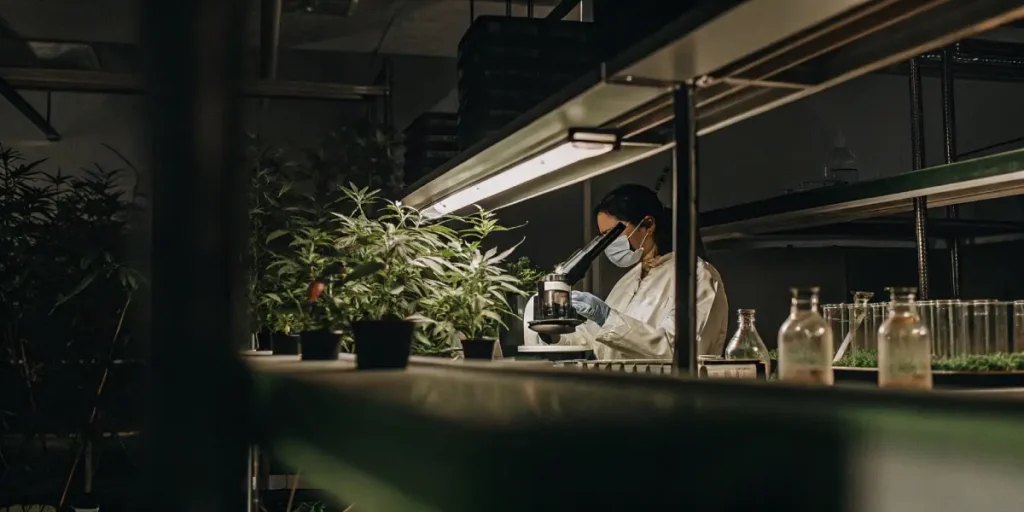
Cytokinins and Bud Density
Cytokinins are known for their role in cell division and bud formation. They help create the dense and resinous buds that every grower desires. By managing cytokinin levels, you can improve both the density and flavor of your cannabis.
If you’re cultivating strains like Gorilla Glue 4 from Blimburn Seeds, ensuring a healthy level of cytokinins can lead to those sticky, heavy buds that are a joy to harvest. These hormones also delay leaf aging, keeping your plant vibrant longer.
The strategic use of cytokinins highlights the plant hormones role in cannabis growth, particularly in enhancing bud formation and density. This hormone promotes more robust and compact flowering, crucial for maximizing the commercial value of the harvest.
Additionally, by delaying senescence in leaves, cytokinins extend the photosynthetic capacity of cannabis plants, contributing to sustained energy production and better overall plant health. This effect underlines the importance of maintaining a balanced hormone profile for optimal growth and yield.
Ethylene and Flowering
Ethylene is a gas that acts as a hormone, primarily controlling the flowering process. In cannabis cultivation, ethylene is crucial for ensuring your plant transitions from the vegetative stage to the flowering stage at the right time.
Controlling ethylene levels can help speed up flowering or delay it, depending on your cultivation needs. Knowing this hormone is particularly beneficial for those growing cannabis with a specific harvest timeline in mind.
The ability to manage ethylene levels effectively demonstrates how plant hormones affect cannabis yield by optimizing the timing of the flowering phase. Proper timing is essential for maximizing both the size and quality of the harvest.
Moreover, ethylene’s role extends beyond flowering, influencing ripening and senescence. By modulating ethylene production, growers can fine-tune the maturation process, ensuring that buds reach their peak potency and flavor at harvest time.
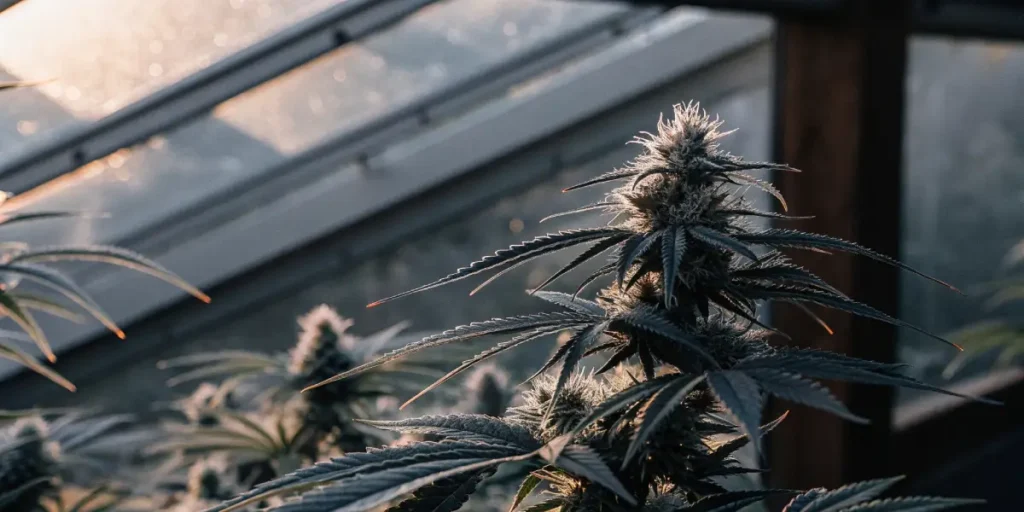
FAQs About Plant Hormones in Cannabis
How do plant hormones affect cannabis yield?
Plant hormones directly impact cannabis yield by influencing growth patterns, bud development, and overall plant health. Hormones like auxins and cytokinins are crucial for root and stem growth, which lay the foundation for a robust plant structure.
By optimizing hormone balances, you can encourage more flowering sites and denser buds, leading to a higher yield. Practical techniques like plant training and careful nutrient management can help harness these hormones effectively.
The types of plant hormones in cannabis cultivation, when managed correctly, can lead to exceptional yield outcomes. Each hormone’s specific function contributes to the overall productivity of the plant, from root establishment to final harvest.
Implementing a strategic hormone management plan can be the difference between an average and a bountiful harvest. By knowing what are plant hormones in cannabis, growers can make informed decisions that significantly enhance their cultivation success.
What is the function of plant hormone balance in cannabis plants?
Maintaining a balance of plant hormones is essential for healthy cannabis growth. An imbalance can lead to issues such as stunted growth, poor flowering, or even plant death. Each hormone has a specific function, and their interactions determine the plant’s overall health.
A balanced hormone regimen ensures the plant can grow vigorously, resist diseases, and produce high-quality buds. Regular monitoring and adjustments can help maintain this balance, especially when using growth-enhancing supplements.
Plant hormone balance in cannabis plants is a dynamic process that requires continuous observation and adjustment. By fostering a harmonious interaction between hormones, growers can cultivate plants that are not only productive but also resilient to environmental stressors.
This balance is particularly important during transitional growth phases, where shifts in hormone dominance can drastically affect development. A well-balanced hormone profile supports consistent growth, leading to superior quality and yield.
What types of plant hormones are used in cannabis cultivation?
The primary types of plant hormones in cannabis cultivation include auxins, gibberellins, cytokinins, abscisic acid, and ethylene. Each plays a crucial role in different growth stages, from seed germination to flowering and bud development.
Knowing these hormones helps growers maximize plant health and yield. For example, auxins promote root growth, while cytokinins help with bud density, making them indispensable in cannabis farming.
Each of these hormones interacts with others, creating a complex network that governs plant behavior and development. Recognizing the specific functions and effects of each hormone enables targeted interventions that can enhance plant performance.
Furthermore, the integration of natural and synthetic hormone supplements can optimize growth conditions, providing plants with the necessary signals to thrive in various environments. This knowledge is key for both novice and experienced growers aiming to improve their cultivation practices.
How can I manipulate plant hormones to improve cannabis quality?
Manipulating plant hormones involves adjusting environmental conditions, using supplements, and employing plant training techniques. For instance, topping and pruning can redistribute auxins, enhancing lateral growth and flowering potential.
Using organic supplements that target specific hormones can also improve cannabis quality. These methods help in producing potent, flavorful buds that meet high-quality standards.
The impact of plant hormones on cannabis quality is profound, and by manipulating these hormones, growers can achieve desired traits in their crops. This includes improving cannabinoid content, terpene profiles, and overall bud appearance.
Advanced techniques such as selective hormone application and environmental control can further refine plant characteristics. By tailoring these approaches to specific strains, growers can produce exceptional cannabis that stands out in the marketplace.
What impact do plant hormones have on cannabis plant stress?
Plant hormones help cannabis plants manage stress by regulating growth and development under adverse conditions. Hormones like abscisic acid play a role in stress responses, helping plants survive drought or nutrient deficiencies.
By knowing and managing these hormones, growers can ensure their plants remain resilient, reducing the risk of stress-induced issues such as hermaphroditism or stunted growth. A healthy hormone balance is essential for stress management.
Stress management through plant hormones is a critical aspect of ensuring the longevity and productivity of cannabis crops. By leveraging hormones that enhance stress tolerance, growers can protect plants from potential threats that could compromise yield and quality.
Furthermore, proactive hormone management can prevent stress from affecting plant reproduction and development, safeguarding the genetic integrity and vigor of cannabis strains. This resilience is vital for maintaining consistent and successful harvests across growing cycles.


